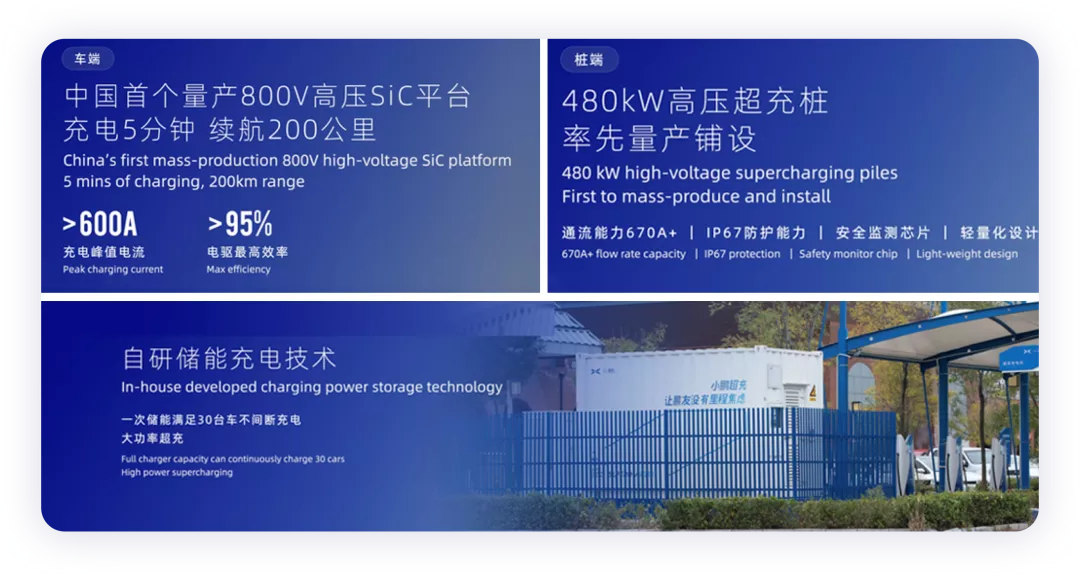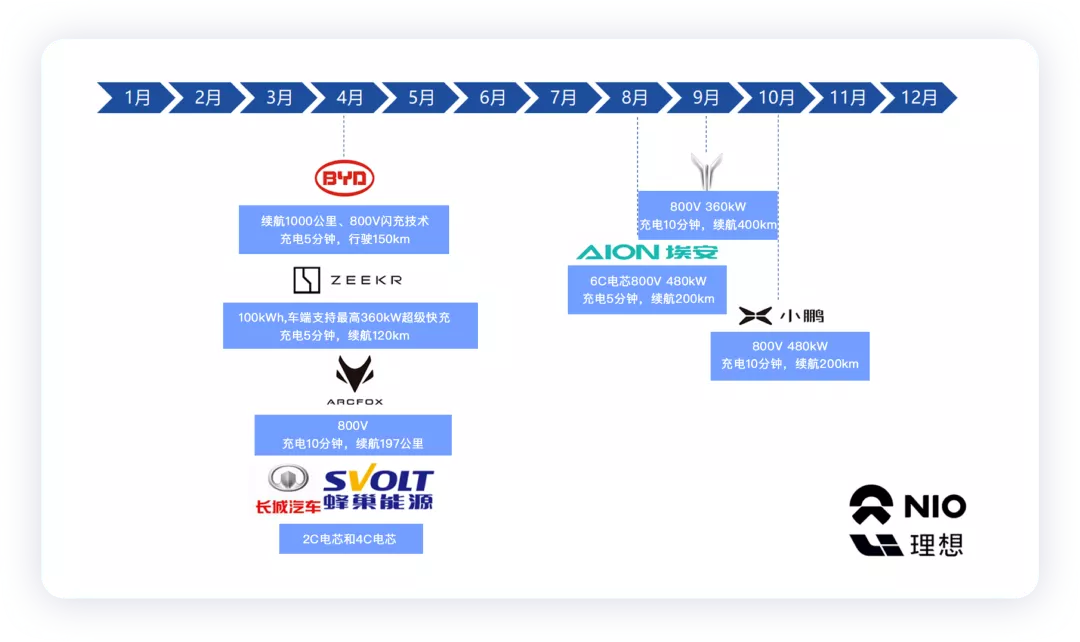Recently, I have been occupied with some matters, and I will focus on thinking about medium- and long-term strategic issues after handling them.
One of the characteristics of the energy storage industry this year is that domestic companies have begun to announce the development of fast charging technology and corresponding content, especially the 1024 event of XPeng Motors, which takes fast charging as a major entry point in the energy supply side. If we put An eCharge, which was also in Guangzhou in August, together, there are many similarities. It’s just that now, most people are more willing to believe XPeng rather than An eCharge.

The Development of Fast Charging in China

If we put all the orders together, we can roughly get the above chart.
Overall, the progress can be divided into two stages:
Stage One “Shanghai Auto Show”
At the Shanghai Auto Show, BYD’s E3.0 and GeeKee’s SEA 800V system were announced, and from subsequent tracking, these two were more focused on promotion.
Later, the ORA Dolphin has practicality and also includes a program for a 1000 km distance and a 150km 5-minute fast charge, which we will have to wait until next year to see. GeeKee promotes 800V, but delivers products with 400V, which is a bit disappointing, but understandable: Volvo and Polestar both use 800V for high-end, which can be regarded as forcing the 2022 products to be promoted in 2021. As for ARCFOX, everyone’s attention is focused on Huawei’s autonomous driving system, and 800V fast charging promotion alone is useless without mass promotion and charging network cooperation.
Note: I want to add that now smart electric vehicles have a taste of ecological construction. A single technical point is difficult to stand out and obtain large-scale attention. 800V fast charging must be supported by its own charging network construction.
I understand that BYD’s 1000km and 5-minute fast charging plan may go to the new high-end brand to be implemented, and this technology may be combined with subsequent brand releases.
Stage Two “Coordination of Vehicles, Piles, and Network”
There have been some changes in the situation in the second half of this year:On August 30th, GAC Aion released the A480 super charging station, which can charge for 5 minutes and drive for 200km. The highest working voltage of GAC Aion’s high-voltage platform can reach 880V, and the maximum charging power can reach 480KW. The highest voltage of the super charging station is 1000V, and the maximum current is 600A.
GAC Aion will rapidly deploy the super charging stations nationwide, and it is estimated that 2000 super charging stations will be built in 300 cities across the country by 2025.
On September 26th, Voyah Motors showcased its self-developed 800V high-voltage platform and super fast charging technology, which allows for 10-minute charging and driving for 400km.
Next, on October 24th, XPeng Motors announced its story around the super charging system – urban energy supplement, super charging, and high-speed surrounding areas. In urban energy supplement, it helps customers without home charging stations by adding charging stations within 5km of their homes based on travel big data. In high-speed surrounding areas, it mainly deploys super charging networks around highway service areas and entrances and exits, thereby improving long-distance travel feasibility for customers.
In terms of charging, XPeng Motors’ parameters are similar to those of GAC Aion. The vehicle uses an 800V high-voltage SiC platform (with a charging peak current greater than 600A) to achieve 5-minute charging and driving for 200km. At the same time, it also launched a matching 480kW high-voltage charging station with a current capacity of up to 670A+. After liquid cooling, the charging gun and line can be lightweighted, which is actually more lightweight than the current 200A fast charging.
As of September 30th, XPeng Motors has invested heavily in the construction of 439 branded super charging stations, which has greatly supported the sales of the P7 in terms of coverage.
Next is the third phase of the future:
It is foreseeable that the following events will be included in the subsequent development:
First is IDEAL, which actually revealed that the 400kW fast charging was not matured in the Q3 2020 financial report, so no pure electric vehicles were launched. However, the previous fundraising was mainly for the research and development reserve of Ideal’s next generation of products, including electric drive, next-generation range extension platform, 400kW fast charging, autonomous driving, and intelligent cockpit technologies. From a logical perspective, it is expected to release its own 800V 400kW fast charging technology in 2022.
NIO: At present, NIO’s batteries with capacities of 70kWh, 84kWh, 100kWh, and the latest 75kWh are all based on 400V. The next step is expected to follow the high-end car route and release its own charging roadmap in 2022.# Great Wall:
Great Wall is preparing to launch a high-end electric vehicle brand that will differentiate itself from ORA. Based on the current pace, it is highly likely that they will announce the promotion of 800V fast charging in 2022.
Summary:
That’s all for now. I just wanted to get started and will analyze it more slowly later.
This article is a translation by ChatGPT of a Chinese report from 42HOW. If you have any questions about it, please email bd@42how.com.